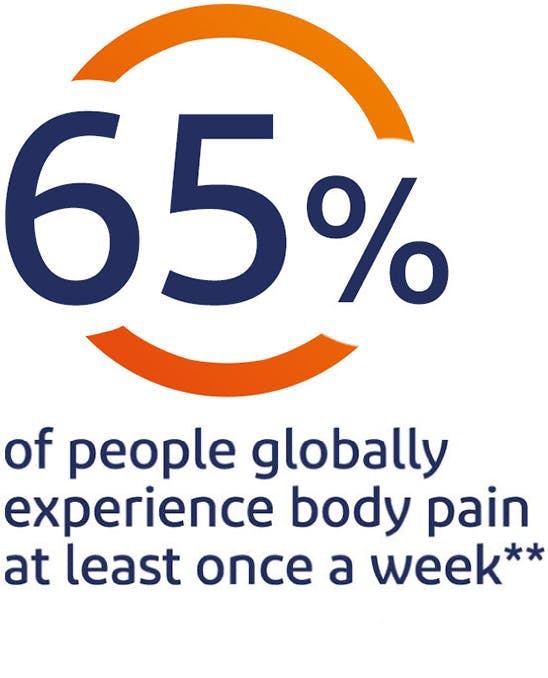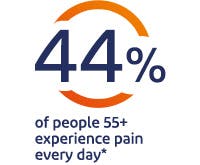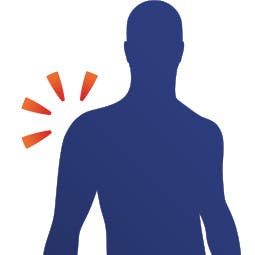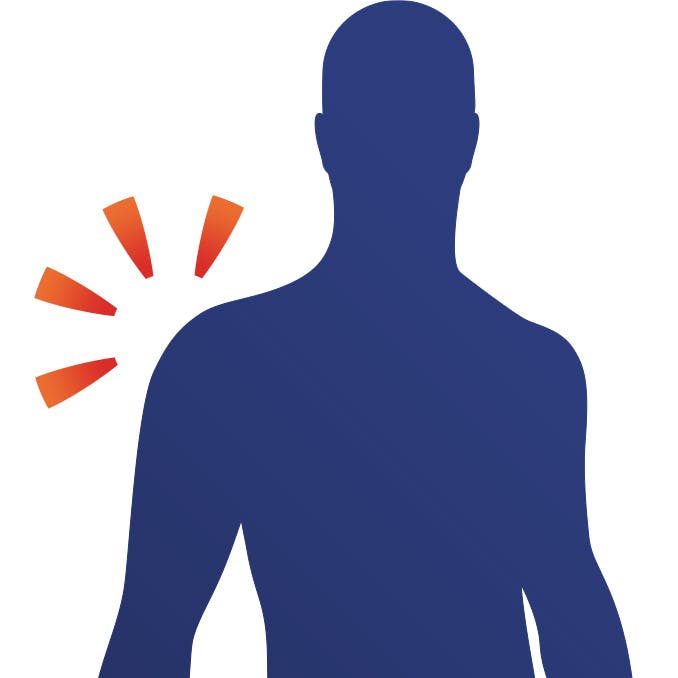Osteoarthritis is one of the commonest causes of joint pain. Here we explain how Voltaren Gel can help to relieve the pain associated with osteoarthritis.
What is osteoarthritis?
Osteoarthritis is the most common form of arthritis, and is a degenerative joint disease. It tends to affect people more as they get older and most commonly causes knee pain, hip joint pain, finger pain and lower back pain. The severity of the condition varies from person to person. Some people will only experience mild symptoms, while others may find everyday activities to be difficult and painful.
What causes osteoarthritis?
This condition is caused by ‘wear and tear’ to the joints. Joints are exposed to damage every day, but usually the body repairs this damage itself and you won’t experience any symptoms. But in people with osteoarthritis, the damage is not fully repaired. This can lead to a loss of the cartilage in the joint (that is the protective surface that allows your joints to move smoothly), bony growths and slight inflammation of the joint. Typical symptoms include joint pain, swelling and stiffness.

DID YOU KNOW?
According to the World Health Authority, osteoarthritis is one of the ten most disabling diseases in developed countries.*
Risk factors
While there are several reasons why you might develop osteoarthritis, some of the key risk factors are:
- Age – People aged 45 and over are more likely to develop this condition
- Weight – Being obese puts more strain on your joints, particularly those that bear the most weight, such as the hips and knees, so this condition tends to be worse if you are overweight
- Joint injury – If joints have been damaged by an injury or operation they are more at risk, particularly if a joint is overused before it is properly healed
- Gender – Women are more likely to develop the condition than men
How can Voltaren Gel help with your pain?
Voltaren Gels are medications that can help to relieve joint pain caused by osteoarthritis. Both Voltaren Emulgel and Voltaren 12H Gel can relieve some of the pain linked to osteoarthritis of the knees or fingers. Each has an easy-to-open cap available for larger tube sizes, which is ideal if you suffer from finger pain.
How does Voltaren Gel work?

Voltaren Gel contains the active ingredient diclofenac, a non-steroidal anti-inflammatory drug (NSAID). The gel is applied by gently rubbing it into the affected area, where it is rapidly absorbed into the skin to relieve pain, reduce inflammation and speed up recovery.
Unlike heat rubs that mask the pain, Voltaren Gel penetrates the skin to the underlying tissues and treats the cause of pain.
Never use on damaged or diseased skin, on an open wound or under a non-breathable dressing.
The special, low odour formula used by Voltaren combines the qualities of a gel and a cream, which work to cool and soothe the skin.
Choosing the right product
Voltaren gel
There are two products in the Voltaren gel range: Voltaren Emulgel and Voltaren 12H Gel. They both work to relieve the pain of osteoarthritis, but have their own unique qualities that will help you to choose which one is best for you.
Voltaren Emulgel
- Contains 1.16% of the active ingredient diclofenac diethylamine
- It can be applied three to four times a day
Voltaren 12H Gel
- Contains 2.32% of the active ingredient diclofenac diethylamine
- It can be applied to the affected area twice a day, ideally in the morning and evening
You should not use Voltaren Gel to treat the pain of osteoarthritis for more than three weeks unless recommended your doctor. If you have a pre-existing condition or are taking other medication, always consult with your doctor to check if it is safe for you to take products containing NSAIDs. Do not use two NSAID-containing products at the same time.
**GSK Global Pain Index Research 2014
Learn more
How does Voltaren work?
Learn how Voltaren works to relieve pain, reduce inflammation and speed up recovery.
read moreExplaining osteoarthritis
Osteoarthritis is the most common form of arthritis. Find out more about what causes it and how to relieve your pain.
*GSK Global Pain Index Research 2014, report, p.8
Read More












